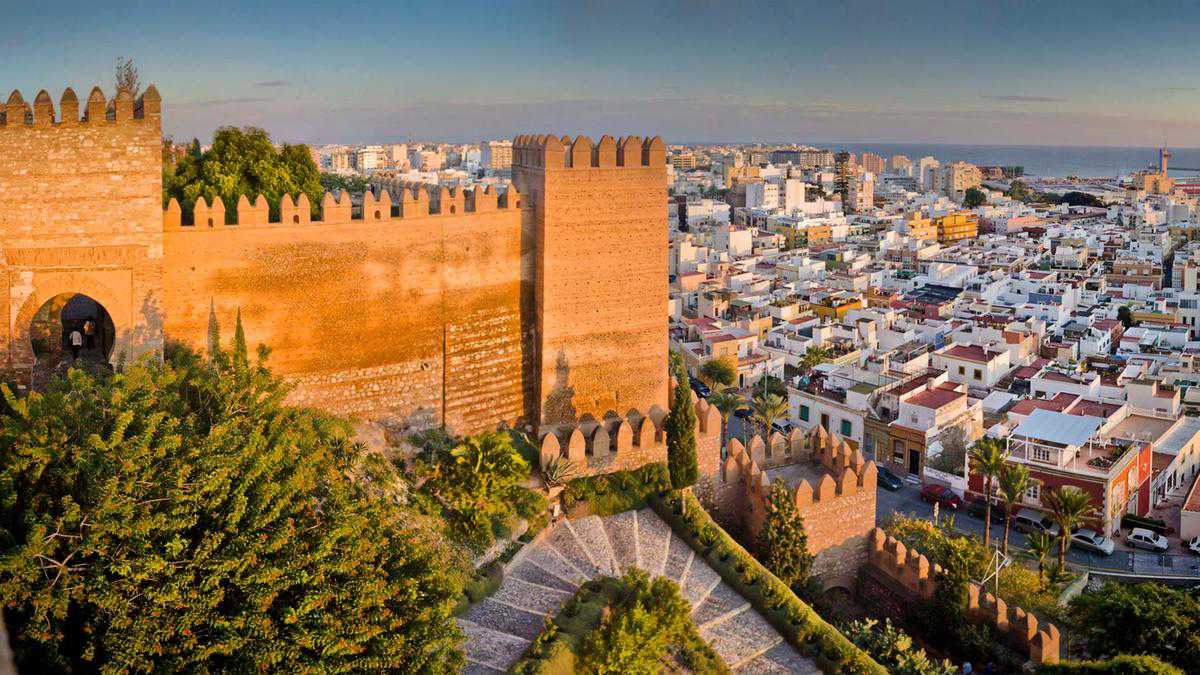Take a visit to Spain's unassuming hot spot
06 March, 2019

Why Almeria?
For the Europeans who provide the bulk of Almeria’s visitors, the climate is the main draw. It is reputedly the hottest city in continental Europe, in its driest region. The continent’s only true desert is on the doorstep, and the coast provides plenty of opportunity to cool off. But the city – dowdier and less obviously romantic than its Andalucian counterparts in Granada, Cordoba and Seville – can’t rely on its sunshine alone.
And that’s where a series of interesting quirks and unusual attractions come in. Almeria is beginning to spruce itself up a bit, and while it will never be anyone’s first choice to visit when in Spain, it could well be the pleasant surprise for anyone travelling around the south.
A comfortable bed
The plushest option in town is the Aire (airehotelalmeria.com), which has a rooftop pool and an ancient baths complex below ground for those who want a bit of “me time”. Wooden-floored rooms come with a novel mattress made from rubber and coconut fibres rather than springs, plus massive photo-covered feature walls. Expect to pay from €98 (Dh431).
The Hotel Catedral (hotelcatedral.net) is in a 19th century building, but has 11th century coffered ceilings. It also has one of the better cafe-restaurants in town and a handy rooftop pool. Rooms, alas, are less exciting than they probably should be. Prices start at €67.50 (Dh297).
Not planning on spending much time in the hotel room and just want something solid, central and cheap? Then the Hotel Costasol does the three star with little to complain about thing admirably. Doubles cost from €47 (Dh207).
Find your feet
Do the history thing first at the snazzily-presented Centro De Interpretacíon Patrimonial, which kicks off with the city’s Islamic heritage. Caliphs and kings ruled from 955 to 1489, building the Alcazab, the second largest fortress in southern Spain, in the process. There are great views of this from the rooftop terrace, while other floors show how the region recovered from drought and pirate attacks through agriculture, and acted as a filming location for Hollywood Westerns.
From there, head towards the weird-looking cathedral – it has ramparts as it was part-designed to be a defensive stronghold – and the Museo de la Guitarra (almeriacultura.com). This celebrates the history of the guitar – and the Almeria man, Antonio de Torres, who created the design of the classical guitar that still holds sway today.
But the Alcazaba (www.andalucia.org) is the real star. It’s a huffing, puffing hike to get up there, but once inside, it’s a mammoth castle complex, with fortified walls plunging down into the valley and back up again. Courtyards and gardens appear around random turns, and the views from the towers over the stark hillside are fab.
Meet the locals
Almeria may be on the Mediterranean coast, but it is a port city rather than a beach city. If you want great beaches, do as the locals do at weekends and head to the rather stunning Cabo de Gata promontory to the south-east of the city. There are clifftop hikes, old gold mines and several kayaking tour outfits out here, but Playa de Monsul and Playa del Playazo are amongst the easier to reach beaches for those who just want to chill out on the sand.
Book a table
Almeria becomes much more energetic at night, and the tapas culture here is quite strong. There are dozens of joints between the cathedral and Paseo de Almeria that work on the same policy – buy a drink and they’ll bring out some free food. Unusually, even by Spanish standards, you get to choose what the free tapa is. There are several in a row down Calle Padre Alfonso Torres, and the beef cheeks with honey at Entrefinos (entrefinos.es) is definitely worth plumping for.
Meanwhile, with one of the city’s more attractive terraces, La Encina (restaurantelaencina.net) does €38 (Dh167) degustation menus or mains such as duck confit with red fruits salsa and creamed rice for €12 (Dh53).
Retail therapy
To come to Almeria for the shopping would be, frankly, bizarre. Main shopping street Paseo de Almeria has a series of mid-range chain shops such as Calzedonia, H&M and Pull and Bear, but there’s nothing to get thrilled about. The nearby Central Market, which got a modern refurb in 2012, is worth poking around in, though. The Almeria province is one of Europe’s agricultural powerhouses, so there are great veggies, fruits, cheeses and meats on offer for would-be picnickers, as well as jams and honeys that may be easier to take home.
What to avoid
The Museo de Almeria (www.museosdeandalucia.es) got a makeover recently, but it’s still filled with largely dull archaeological finds.
Don’t miss
One of Almeria’s oddities is its unlikely heritage as a movie location. This kicked off in earnest with Sergio Leone’s “spaghetti” Westerns, such as The Good, The Bad and The Ugly, which substituted the Tabernas desert for the American West. But others shot in and around the city include Lawrence of Arabia and Indiana Jones and the Last Crusade. Many of the Westerns were shot at Oasys Mini Hollywood (oasysparquetematico.com), which now acts as a Wild West theme park when the cameras aren’t in town. Expect plenty of cheesy staged shoot-outs for your €22.50 (Dh99) entrance ticket.
Getting there
Emirates flies from Dubai to Madrid, with prices from Dh2,880 return. From Madrid, the best bet is to fly to Almeria with Iberia, with direct returns costing from Dh337.
